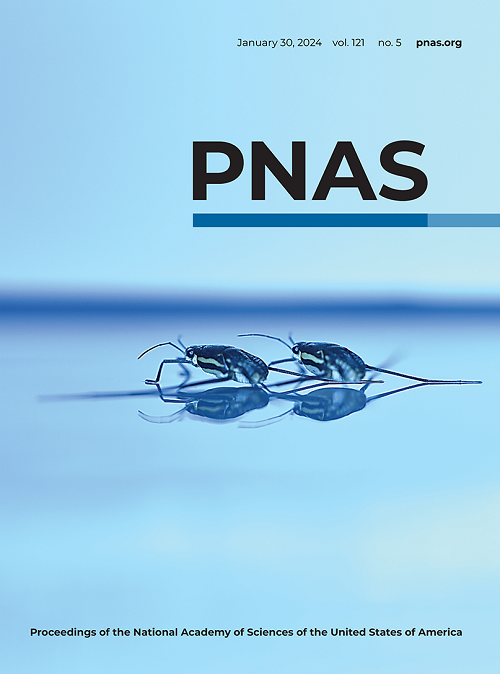结合氨基酸合成和连接的反馈网络中的自催化对称破缺和手性扩增
IF 9.1
1区 综合性期刊
Q1 MULTIDISCIPLINARY SCIENCES
Proceedings of the National Academy of Sciences of the United States of America
Pub Date : 2025-05-16
DOI:10.1073/pnas.2423683122
引用次数: 0
摘要
一个动力学模型耦合了益生前似是而非的富含对映体的蛋白质原氨基酸的合成与催化肽连接,导致一个可能表现出对称性破坏和手性扩增的自催化网络,为生物同手性的出现提供了一条可行的途径。研究表明,导致手性扩增的对称破缺可以通过两种方式发生:一种是建设性机制,即二聚体催化合成相同对映体的单体;另一种是破坏性机制,即二聚体催化相反对映体的单体分解。本文章由计算机程序翻译,如有差异,请以英文原文为准。
Autocatalytic symmetry breaking and chiral amplification in a feedback network combining amino acid synthesis and ligation
A kinetic model coupling prebiotically plausible synthesis of enantioenriched proteinogenic amino acids with catalytic peptide ligation leads to an autocatalytic network that may exhibit symmetry breaking and chiral amplification, providing a feasible route to the emergence of biological homochirality. We show that symmetry breaking leading to chiral amplification can occur in two ways: a constructive mechanism in which dimers catalyze the synthesis of monomers of the same enantiomer, and a destructive mechanism in which dimers catalyze the breakdown of monomers of the opposite enantiomer.
求助全文
通过发布文献求助,成功后即可免费获取论文全文。
去求助
来源期刊
CiteScore
19.00
自引率
0.90%
发文量
3575
审稿时长
2.5 months
期刊介绍:
The Proceedings of the National Academy of Sciences (PNAS), a peer-reviewed journal of the National Academy of Sciences (NAS), serves as an authoritative source for high-impact, original research across the biological, physical, and social sciences. With a global scope, the journal welcomes submissions from researchers worldwide, making it an inclusive platform for advancing scientific knowledge.

 求助内容:
求助内容: 应助结果提醒方式:
应助结果提醒方式:


